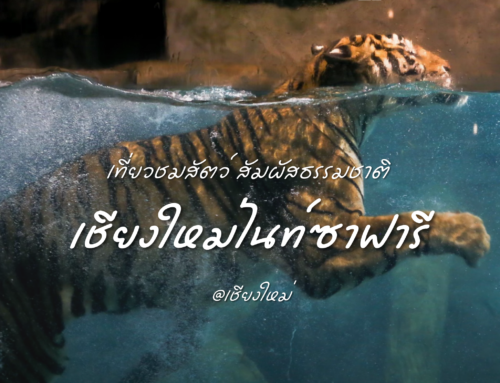Bretschneidera sinensis(ชมพูภูคา), the sole species in genus Bretschneidera, is a rare, 10–20 metres (33–66 ft) tall tree with large inflorescences. It is found in south and east of China, Taiwan, northern Thailand and northern Vietnam. It is threatened by habitat loss. Because of its relatively recent discovery in Taiwan and Thailand, it is possible that it could also be found in Laos and northern Myanmar. It was named in honor of Emil Bretschneider. In Thailand it is known as Chompoo Phu Kha (Thai: ชมพู ภูคา) and is found only on Doi Phu Kha National Park in the Luang Prabang Range where it flowers in February and March.
The beautiful nuthatch (Sitta formosa, sometimes called Callisitta formosa) is a bird species in the Sittidae family, collectively known as nuthatches. It is a large nuthatch, measuring 16.5 cm (6.5 in) in length, that is not sexually dimorphic. Its coloration and markings are dramatic, the upper parts being black and azure, streaked with white and pale blue on the head and lined with the same colors on the wing feathers. The underparts are orange, and the eyebrow and throat are ochre. An irregular, dark eyestripe highlights its eye. S. formosa’s ecology is not fully described, but it is known to feed on small insects and larvae found on the trunks and epiphyte-covered branches of trees in its range. Reproduction takes place from April to May; the nest is placed in the hole of an oak, rhododendron, or other large tree. The nest is made of plant material and fur in which the bird typically lays four to six eggs. In Thailand, the only observation of the species was at a height of 950-2,290 m. only found in Doiphukha National Park.
1715 Viewpoint : A rugged mountain with fantastic scene. The weather out there is cool and there are fogs and clouds all year. 1715 Viewpoint is the one of best place to see sunrise.
Phu Wae is one of the most distinctive looking peaks on Doi Phu Ka. Previously, there were only a few groups of visitors who successfully made their way up to the summit, as it is a steep and long climb. Nowadays Phu Wae’s beauty has become so well known that more and more tourists are finding their way to the top. For nature lovers the climb along the mountain ridge to Phu Wae is not too arduous or overgrown. Plus, the higher you climb, the breezier it is. If you want to go up Phu Wae, please contact the national park at least two weeks beforehand. It is necessary to have a navigator and a porter to help carry luggage, bedding, food and drinks. A suitable time to allow for trekking up Phu Wae is three days and two nights or two days and one night.
The popular starting point of the journey to Phu Wae is at Ban Dan, which is 63 kilometers away from the national park office. The mountain peak of Doi Phu Wae is a 1,837 metre high grassy wold. It allows tourist to enjoy panoramic views, particularly a view of mountain mist during the dawn and dusk, which is a really fantastic sight.The best moment of the day is at dusk in winter. In the late afternoon when the sun is about to set, the entire mountain of lush grassland turns lustrous and golden. As the sun’s orange radiance gets weaker, the scenery becomes more breath taking. For this reason, Phu Wae is nicknamed ‘changing colour mountain’.
Nam Wa River white-water rafting is the one of main adventure activity of the Khun Nan National Park, Mae Charim National Park and Doi Phu kha National Park and is considered one of the hardest and most enjoyable white-water areas in Thailand. The difficulty ranges from Level 1 all the way up to Level 5 depending on the season. The difficulty of rapids is at Level 3-5 during June to October, at Level 3-4 during November to February, and at Level 2-3 during March to May. The suitability of the different parts of the river is also dependent on the season as well. The upper portion of the Nam Wa River is more suitable for rafting during the cool season after which the water level drops and surfacing rocks become obstacles to the inflatable rafts.
The middle part of the Nam Wa River is suitable during October to February while the lower portion of the river is suitable all year round. The Nam Wa River is about 100 km long making it impossible to journey down the entire river in one go. The rafting route is therefore split into three areas as follows: “Middle Wa River” is part Doi Phu Kha National Park area. This part of the Wa River starts from Sop Mang Village and ends at Wang Lun Village, which normally takes around two days to finish the 85-km route. You will have to navigate your boat through 100 large and small rapids with the difficulty level up to 5. Both sides of the waterway are green with forest vegetation. Because the river here is wide and deep, the water tends to flow very quickly and strongly. The obstacles in the area include whirlpools and large waves. Some rapids are like a small waterfall that can easily suck rafts to flip over. Traversing them requires a considerable amount of energy and skill; therefore, it is only recommended for experienced rafters.
Address : Tambon Phukha, Amphoe Pua, Nan 55120
Tel : 082-194-1349
Fax : –
E-mail : doiphukha_np@hotmail.com
Website : http://www.facebook.com/อุทยานแห่งชาติดอยภูคา-150911621976611/






Leave A Comment